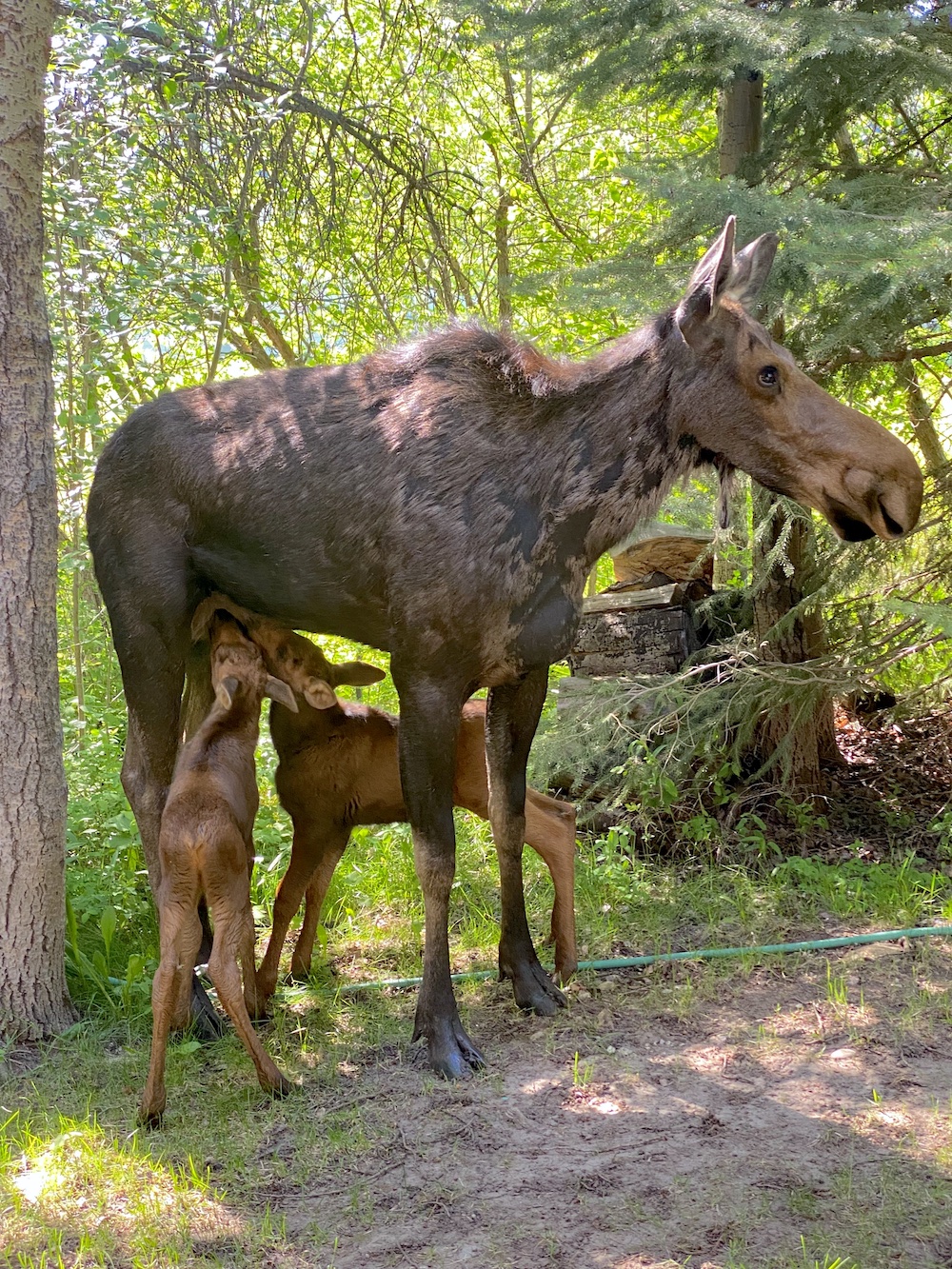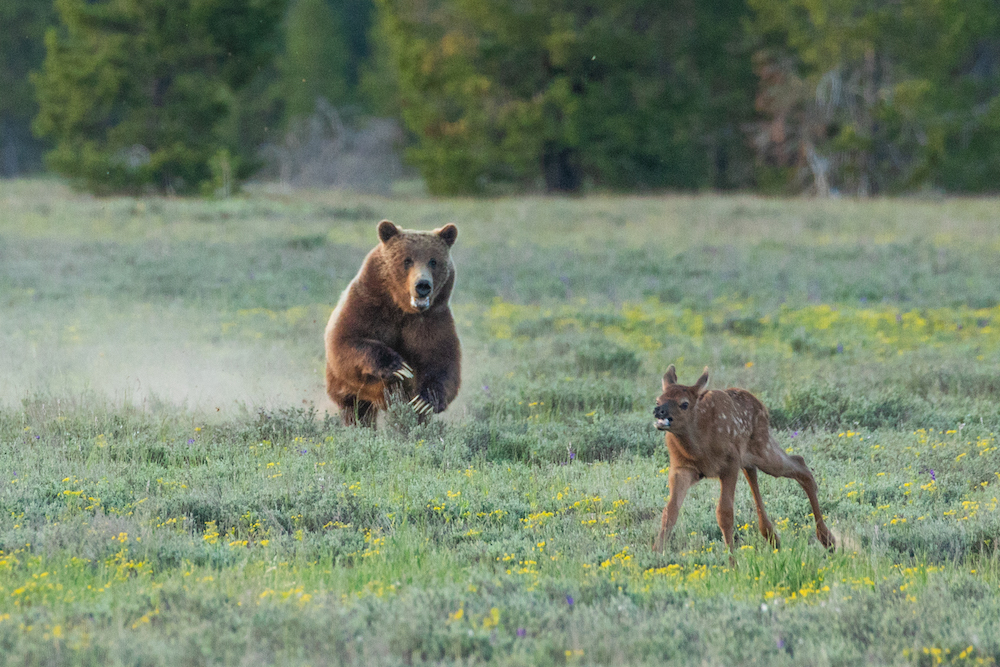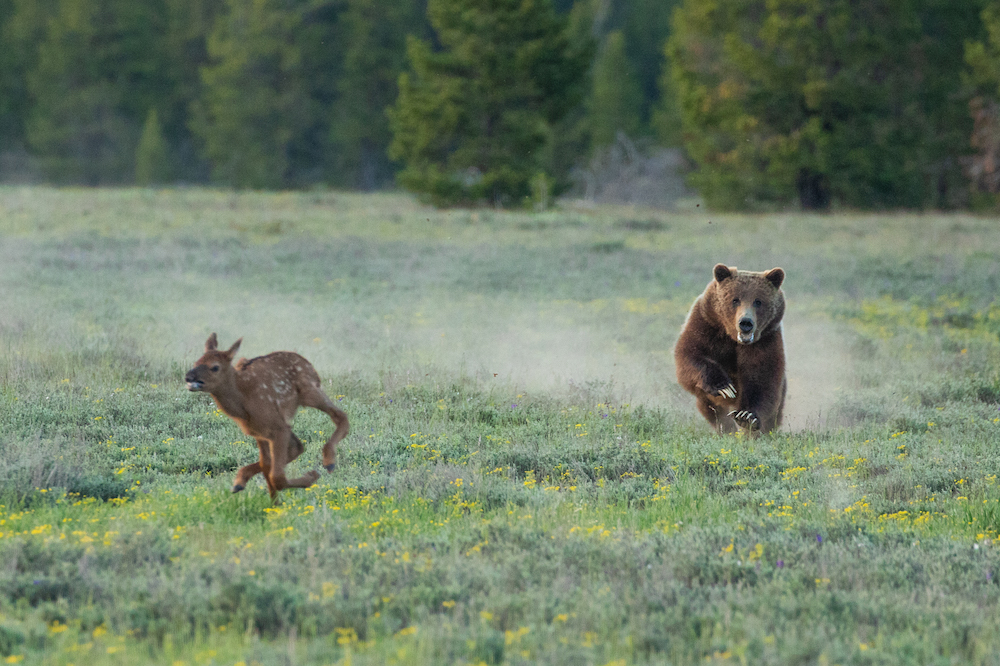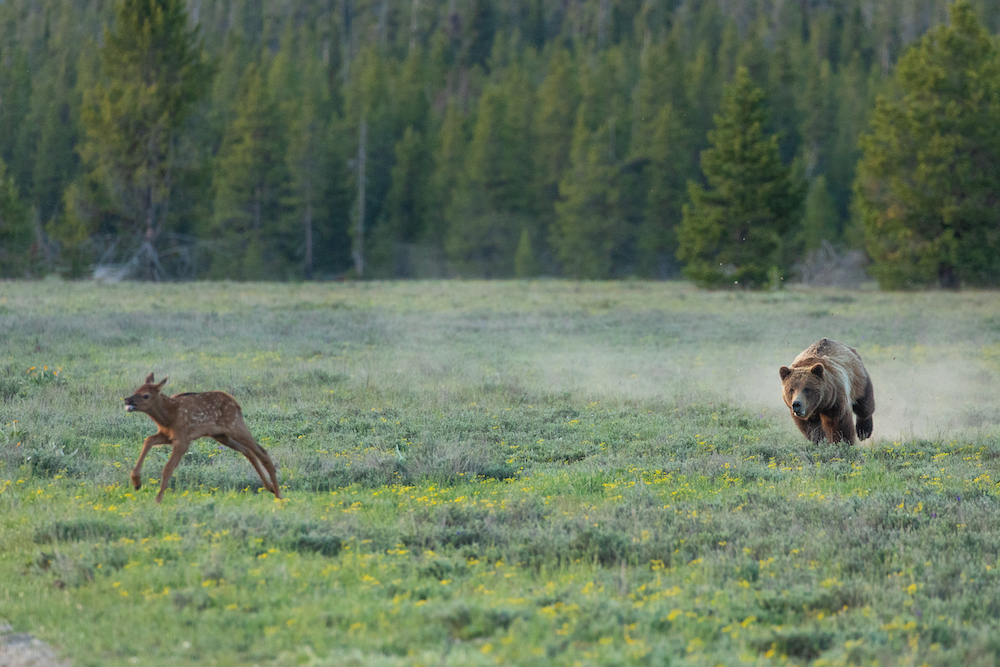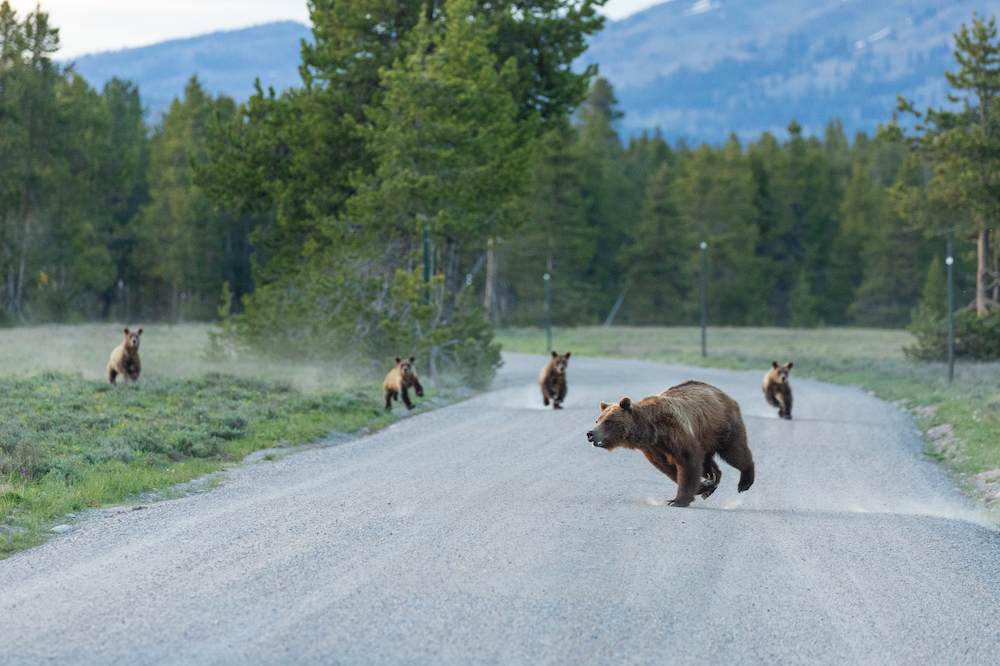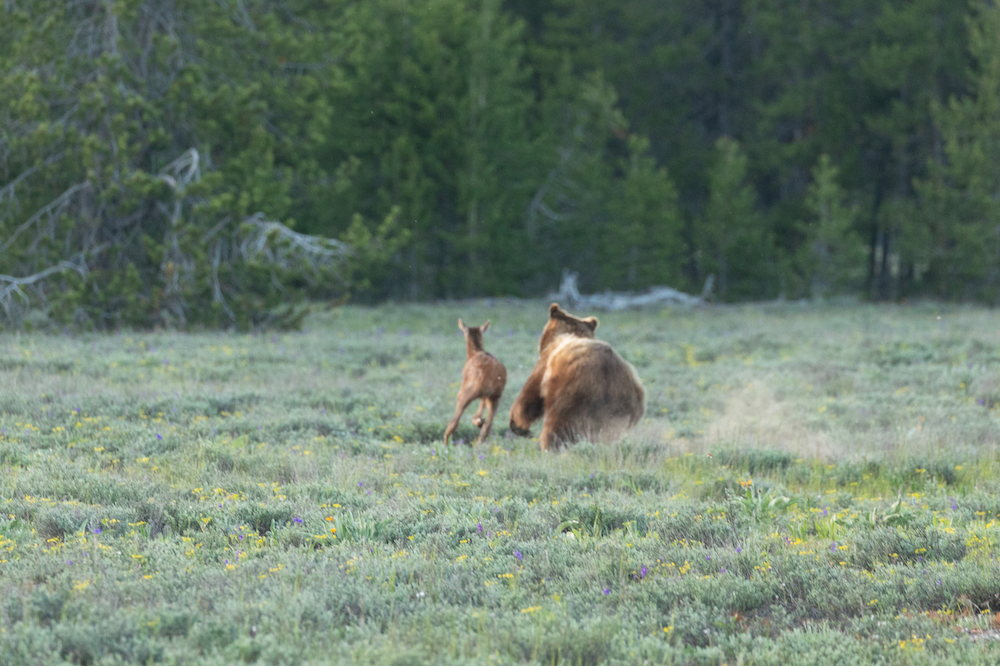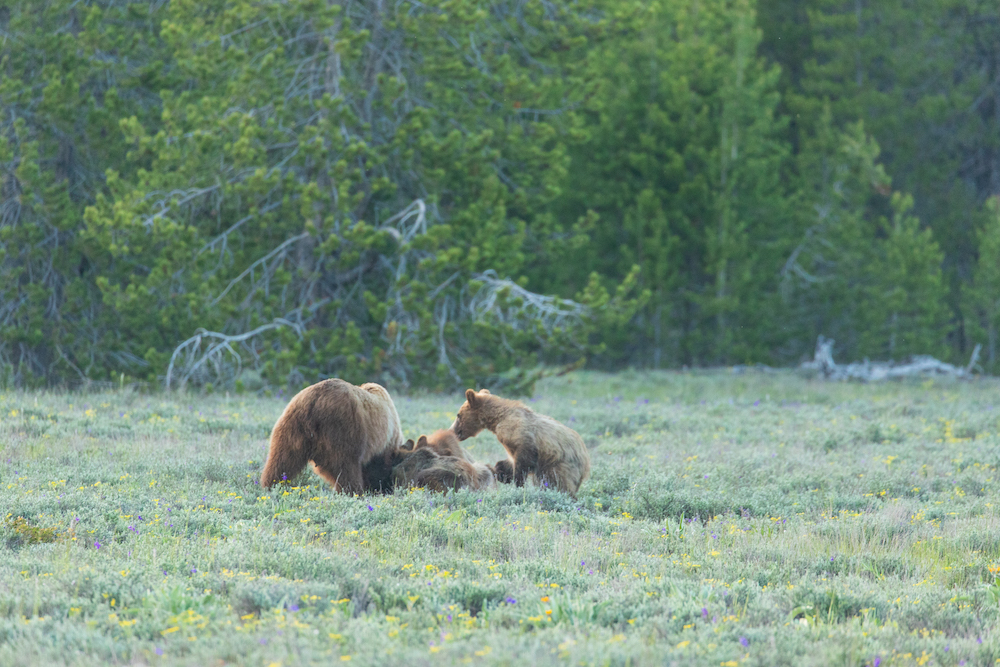June 2021 Wildlife Log
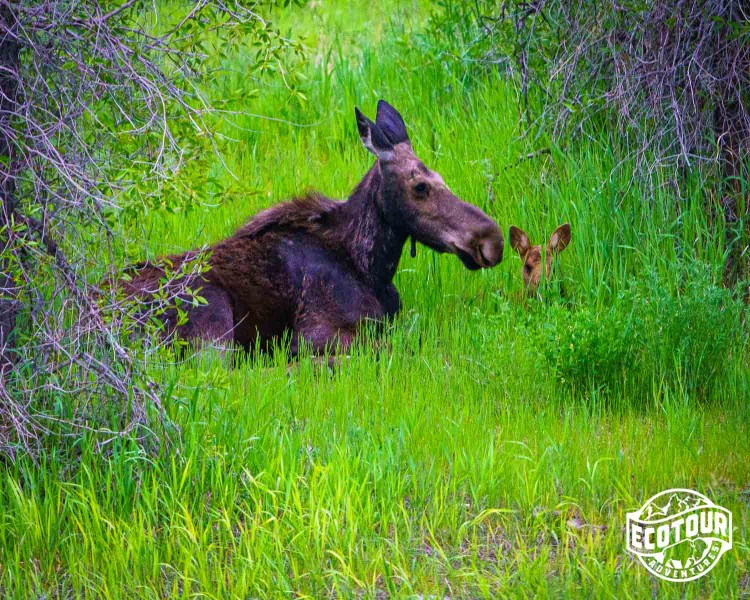
Summer is here in Grand Teton and Yellowstone National Parks! June is a month of wildflowers, colorful songbirds, and baby animals! Elk and moose calves, deer and pronghorn fawns, and bighorn sheep lambs are joining the bison calves, grizzly and black bear cubs, wolf and coyote pups that are already on the landscape. The regions rivers and streams are swollen with meltwater as snowfields recede into the high country, revealing lush green vegetation.
We're out touring Grand Teton and Yellowstone National Parks daily, check back for more highlights as the month progresses!
Beaver Battle
Beaver Battle! Here's something you don't see often! Naturalist @joshmettenphoto recently observed these two beavers wrestling while on a float through Grand Teton National Park. Beavers are territorial but also live in multi generational family groups so we're not totally sure if this was a dispute or play. Watch a video of the encounter via the link in bio. #myjhecotour
Bird Feather Form and Function
Birds use feathers for a lot more than just flying! Enjoy some great spotting scope video and learn about the multiple uses of feathers from EcoTour Adventures Naturalist Tyler Greenly. This video originally appeared as part of our Wildlife Wednesday Monthly Round-up the first Wednesday of every month on Facebook.
Early Summer Grizzly Update from Naturalists Laura Krusheski and Tyler Greenly
We've been enjoying a lot of grizzly sightings across the Greater Yellowstone Ecosystem this spring. Here's a video update that originally aired during our monthly Wildlife Wednesday Video Round Up including information about the diverse foods bears eat, dispersal of cubs, some of our individually known grizzlies, and more from Naturalists Laura Krusheski, and Tyler Greenly.
Videos taken from a distance using our Maven S1.A Spotting Scopes and Phone Skope adaptors
Moose Calves Arrive in Jackson Hole!
Moose Twins! We've started observing our first moose calves of the year across the Greater Yellowstone Ecosystem. Unlike their cousins deer and elk, moose calves are “followers” sticking close to their mother at all times for safety. By contrast, baby deer and elk are “hiders” and spend the first few weeks of life hiding in hopes of avoiding predation.
Cow moose are especially protective of their calves and can be aggressive to people. Be sure to give them a wide berth during this important time. Using optics and telephoto lenses to observe and take images from a distance helps reduce stress on these animals. Thanks to our friend @brizznantley for the great shot!
Snapped: Grizzly 399 Hunts an Elk Calf
The flush of baby animals that occurs each spring in the Greater Yellowstone Ecosystem isn't by accident. It is a carefully timed event to maximize forage availability, growth throughout the summer, and to minimize overall predation via an adaptation we call “predator swamping.”
By calving all at once, elk and other prey species overwhelm predators with an abundant food source. Grizzlies like 399 and her 4 cubs can only eat so much in a day, and after a few weeks the calves will be able to outrun them. Until then the calves hide, relying on their spotted fur and lack of a scent to remain undetected.
This elk calf became a meal for a family of five bears, a critical, yet seasonal food source that will help them build fat reserves to endure the following winter. Natural food sources like this one also help grizzlies avoid seeking out human food and the conflict that comes along with it.
Each year, the great elk herds of the GYE provide a bounty of life, with the surplus sustaining not only its wild hunters but also thousands of human hunters and their families as well.
Thanks to ETA Naturalist @_rafaelsandoval_ for sharing this epic scene, scroll through the images to see the hunt!


